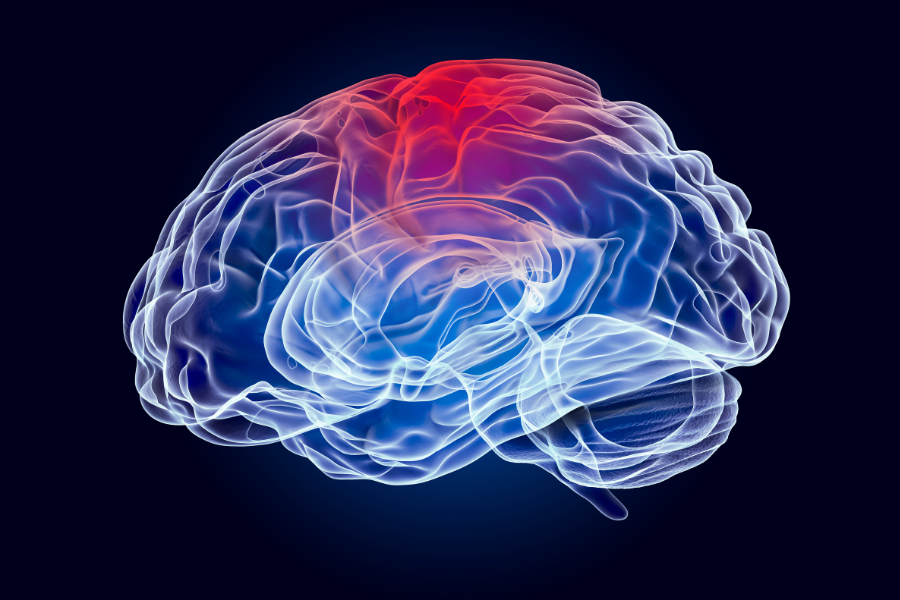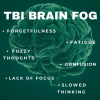The parietal lobe is vital for sensory perception and integration, including the management of taste, hearing, sight, touch, and smell. It is located behind the frontal lobes, just above the temporal lobe. The front half of our parietal lobe receives information from our body’s senses such as pain, temperature, touch, taste, pressure and serve functional purposes. For example, feeling a rock in your shoe that causes you pain would allow you to remove your shoe to see what is causing your irritation. The parietal lobe also allows you to understand the location of where you felt being touched, also known as tactile localization. Other examples of receiving information from our body’s senses include being able to feel when you burn yourself on a stove (temperature), noticing when a bug gently lands on you (touch), or being pushed (pressure). These functions are important for our survival. Therefore, awareness of these senses is vital.
The back portion of our parietal lobe is responsible for areas such as sustained attention, spatial awareness, visual memory skills, and our mathematical and reasoning skills. Spatial awareness, also called spatial orientation or body awareness, is critical for being able to interact and move through our environment successfully. It is being aware of where your body is in space. This is important to be able to coordinate your movements such as bringing a spoon to your mouth. Examples include, walking, running, or dancing to a song without falling or bumping into others. It would also allow you to replicate a yoga pose you are learning. It also helps you understand where objects are in relationships to each other. For example, understanding that your coffee is next to your laptop or that your dog is right behind you. Additionally, the parietal lobe also allows you to view the world in three-dimensions, also known as having depth perception. This means that you are able to perceive an object’s shape, size, and it’s distance from you. Therefore, if you were driving, you would be able to tell the distance between yourself and the car in front of you so that you are able to maintain a safe distance. These skills are important to navigate through your everyday life and are essential for our safety.
Spatial awareness also allows you to understand directional terms (e.g., above, below, top, bottom, under, left, and right). This would allow you to put a book away if you were asked to put it on the top shelf of a bookcase. By understanding where you are in comparison to your surroundings, you are able to navigate through your environment and would understand how to get from one location to another by looking at a map. Spatial awareness is also a foundational skill for important activities such as handwriting, mathematics, and activities that require us to move our bodies, such as playing sports.
The parietal lobe allows you to understand what you are seeing but also remembering these images when they are not in our sight. Additionally, it allows us to understand and give meanings to symbols such as numbers, letters, signs, or objects. Our mathematical abilities also come from the parietal lobe such as understanding quantities (e.g., small versus large), counting, sorting numbers or items, and mathematical operations (e.g., addition and subtraction).
Impairments Common with Parietal Lobe Damage:
| Impairment | Strategies |
| Contralateral neglect
(other names: hemispatial neglect, unilateral neglect, and spatial neglect)
|
|
| Loss of Temperature Sensation |
|
| Loss of Sense of Touch |
|
| Mathematical abilities |
|
| Ability to express oneself through writing |
|
| Balint’s Syndrome: a rare disorder that results in difficulties voluntarily moving your eyes, accurately reaching for an item you are viewing, or integrating all aspects of a picture or scene.
|
|
| Difficulties judging distances (depth perception) |
|
| Difficulties with Body Coordination |
|
| Difficulties with Visual Attention |
|
References:
About Brain Injury: A Guide to Brain Anatomy. Brain Injury Minnesota.
Flint Rehab. 2020. Parietal Lobe Damage: Understanding Symptoms and Treatments.
https://www.flintrehab.com/parietal-lobe-damage/
Kalat, J. W. (2017). Biological Psychology. Cengage.
Arsalidou, M., Pascual, L., Pawliw-Levac, M., & Sadeghi, M. (2017). Brain areas associated with numbers and calculations in children: Meta-analyses of fMRI studies. Developmental Cognitive Neuroscience 30, 239–250. https://doi.org/10.1016/j.dcn.2017.08.002
Altabakhi, I.W., & Liang, J.W. (2019) Gerstmann syndrome. StatPearls Publishing. https://www.ncbi.nlm.nih.gov/books/NBK519528/



